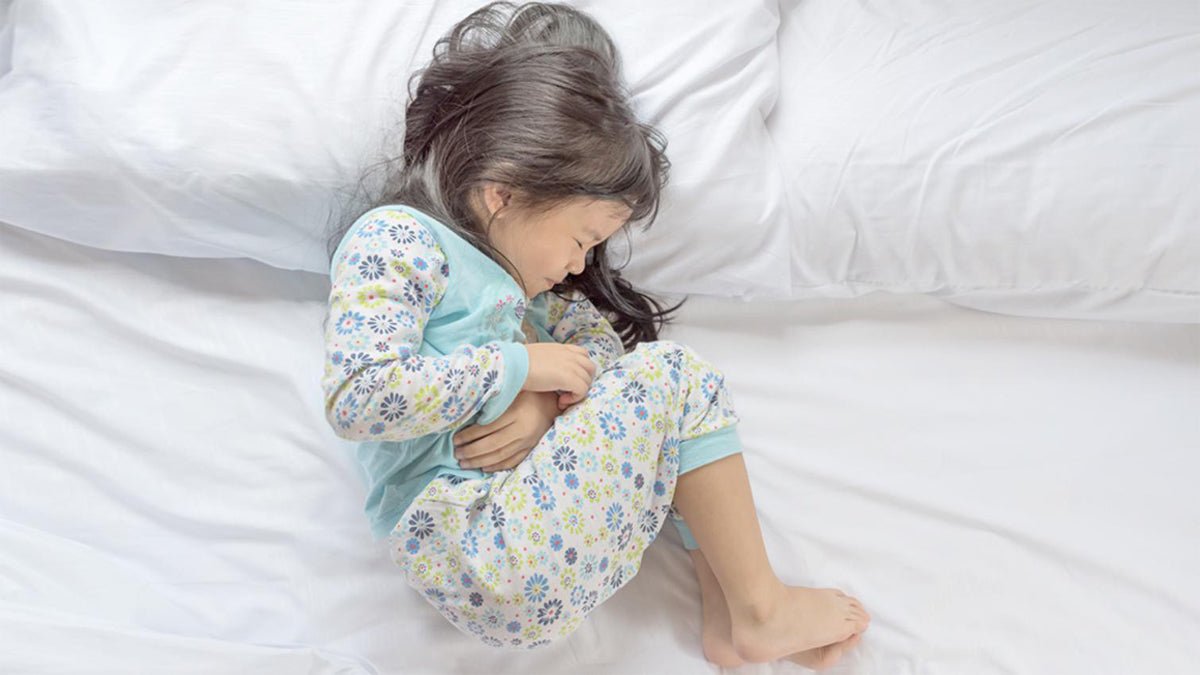UTIs in Kids: How to Detect It, Talk About It & Treat It

Medically Reviewed by: Dr. Steve Hodges
When we talk about reproductive health, we don’t typically include kids in the convo. But in the case of urinary tract infections, we should.
Why? Because UTIs are unbelievably common for children of all ages. Up to 8 in 100 girls and 2 in 100 boys will get a UTI by age 5. UTI symptoms in kids can be tough to catch and even harder for them to communicate. And if left untreated, a UTI can cause serious health concerns for your little one.
That’s why it’s critical to know the signs of UTIs in kids and, most importantly, what we can do to prevent them.
First off, what’s a UTI?
We’re glad you asked. Bacteria in our urethra is usually flushed out when we pee. But if it’s not, the bacteria can travel up the urethra and into the urinary tract. From there, it can set up camp, multiply, and yep - you guessed it. You’ve got yourself a UTI.
There are two main types of UTIs in children:
- Bladder infections (or cystitis)
- Kidney infections (or pyelonephritis)
Both pyelonephritis and cystitis in kids can be treated with antibiotics. But if they happen frequently or are left unattended, these infections can get a lot more serious.
How do kids get UTIs?
A big risk factor for kids is that they’re still learning how the whole bathroom situation works. When to go, where to wipe, how to wipe. If you’ve ever toilet trained a child, you know the struggle.
This learning period is a perfect time for bacteria to make their move. Causes of UTIs in kids include infrequent peeing, delaying urination for a long period of time, poor toilet and hygiene habits, and wiping from back to front after pooping. In fact, the most common bacteria that causes UTIs in children is E. coli, which grows in the intestine and can easily spread from the anus to the urethra.
Girls are 3 times more likely to get a UTI than boys. Their urethras are shorter and closer to the anus, making it easier for bacteria to spread. Vulvitis - a condition where the vulva is irritated or inflamed - can also put girls at risk.
According to pediatrician Dr. Steve J. Hodges, “We found that girls with vulvitis were at least eight times more likely to have a lab-diagnosed UTI than girls without vulvitis, suggesting that vulvitis is a major contributor to UTIs in young girls.”
Here are other common causes of UTI in kids:
- Exposure to bubble baths (for girls)
- Tight-fitting clothes or underwear (for girls)
- Swimming pool water
- Complications with the urinary tract
- Family history of UTIs
- Vesicoureteral reflux, a birth defect that causes urine to flow backward
What are UTI symptoms in children?
This is where things get tricky. UTI symptoms in kids can be overlooked because they either seem fairly normal or they seem to be pointing to a different issue. Most kids struggle with describing their symptoms or communicating why they feel sick.
On top of that, UTIs in toddlers and infants might not show any symptoms at all. It’s no wonder that most adults don’t know how to tell if a child has a UTI.
Symptoms in young children can include fever, poor appetite, vomiting, diarrhea, and irritability. For bladder infections, you might notice your little one has bloody or cloudy urine, a burning sensation when they pee, or that their pee smells bad. And for kidney infections, symptoms could include high fever, chills, nausea and vomiting, back and stomach pain, or severe fatigue.
Keep an eye out for kidney infection symptoms especially. If this type of UTI goes untreated, it could potentially lead to kidney failure, kidney swelling, or even organ failure.
How are UTIs in kids diagnosed?
If you think your child might have a UTI, don’t wait. Call your doctor right away to stop the infection before it spreads. Most physicians will require a urine sample to diagnose the UTI. If your child isn’t toilet trained, there are a few other options:
- A urine collection bag that simply attaches to their skin
- A catheter inserted into the urethra or penis
- A needle inserted directly into the bladder
Once they have a sample, your doctor can check for bacteria and choose the best action plan for treatment.
How to treat a UTI in children
Antibiotics are the best way to fight your child’s UTI quickly and effectively. The type of antibiotic and length of use will depend on how serious their infection is, but 3 to 10 days is the usual.
Make sure your child takes all the medication, even if they start to feel better. Otherwise, the bacteria might resist the antibiotics and keep on multiplying. Their symptoms should start to clear up within 3 days of taking the medication. If not, give your doctor a call.
Unfortunately, there are a few cases where your child might have to be hospitalized for a UTI. For example:
- If they are younger than 6 months
- If they have developed a kidney or blood infection
- If they can’t take fluids or medicine by mouth
How can I prevent UTIs for my child?
Finally, some good news! Urinary tract infections in kids may be common, but they’re also preventable. Here are some tangible ways to block bacteria before it takes over.
UTI prevention gummies
Your kids already love gummies. Why not give them super gummies? Utiva’s delicious UTI Control Gummies are packed with 18mg (per serving of 4 gummies) of PACs, a 100% natural agent derived from cranberries. This active ingredient is clinically-proven to fight bacteria and prevent infection. Utiva UTI Control Gummies are also full of antioxidants that can help your kiddos improve their everyday immune system. Plus, it’s doctor recommended and completely kid-friendly.
Cleansing wipes
For proper hygiene, make sure to always have cleansing wipes on hand. Utiva’s flushable Cleansing Wipes are specially formulated with natural ingredients to avoid irritation and keep you feeling fresh. Also one of our brand partners, Dr. Soother’s Healthy Wipes, are created by board-certified Pediatric Urologist, Dr. Steve Hodges. These are especially made for kids of all ages and are steroid and antibiotic free, making them safe for use. With quality cleaning products readily available, you and your mini-me won’t have to think twice about leftover bacteria.
Keep a UTI-free checklist
These small changes can make a huge difference in protecting your kid from UTIs:
- Make sure your child drinks enough fluid to keep bacteria flushing out freely
- Avoid bubble baths for girls, as soap and bacteria can get into the urethra
- Don’t dress girls in tight-fitting clothes or underwear
- Make sure girls are wearing cotton underwear for better airflow
- Say no to caffeinated drinks that can cause bladder irritation
- Change diapers frequently
Our number one tip for prevention? Get talking.
Talk to your kids about good hygiene, proper wiping techniques, and why it’s bad to hold in their pee. Ask them questions about their symptoms. Let them know that it’s okay to say whatever they’re feeling, even if it seems embarrassing. Keep the communication open and available, so your child knows how to stop a UTI and how to talk about one if it happens.
Want to join the UTI conversation yourself? Our Utiva Community is a safe space where you can talk with other parents about protecting your kids from UTIs. We even host monthly virtual sessions with doctors and industry experts! The more educated you are, the easier it will be to keep your family safe, healthy, and free to pee.
Knowledge is power
Sign up to our newsletter to keep learning!

- Choosing a selection results in a full page refresh.
- Opens in a new window.




